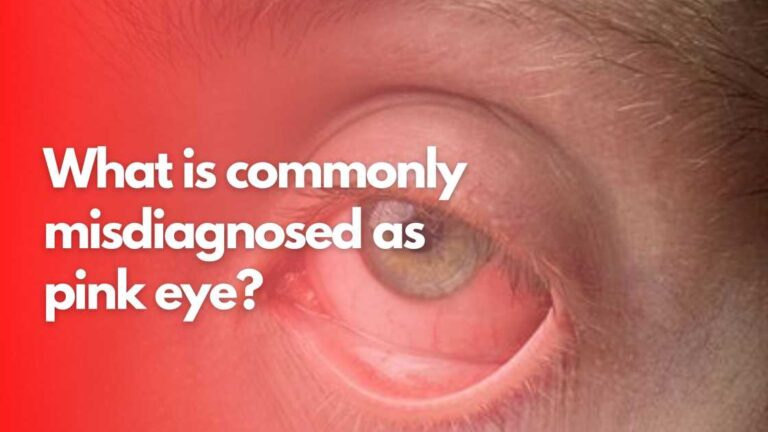Scar tissue is a thick, fibrous tissue that replaces damaged healthy tissues. A cut, an injury, or surgery can all kill healthy tissues. People who usually feel pain around these areas wonder if the pain results from the scars.
In this article, we will discuss if scar tissue can cause pain.
What is scar tissue?
Scar tissue is a thick, fibrous tissue that forms when normal healthy tissue is damaged by disease, injury or surgery (1). Internal tissue injury can cause scar tissue to grow after surgery.
Scar tissue does not usually hurt in the early stages. There may be damage to the nerves and some healthy body tissues in the area.
However, as nerve endings regenerate, scar tissue can become painful. Scar tissue that develops due to an internal condition can also be painful. The severity of the initial cut and its placement on your body can affect how much pain you experience (2, 3).
Can scar tissue cause pain?
Yes, scar tissue can indeed cause pain. Scar tissue can be painful in a variety of ways. Skin tightness resulting from scars can cause pain, making it more difficult to move freely.
If the wound is deep and impacts nerves or tendons, a person may experience long-term symptoms in the affected area, such as pain or numbness. The scar tissue itself may change the distribution of nerve fibers; the modification contributes to neuroinflammation and pain (4)
Fibrosis, which happens when the body produces an excessive amount of scar tissue, causes scar tissue pain in certain people.
Fibrosis causes adhesions in the tissue or joint, which can cause inflammation, and this contributes to pain and loss of function of the affected areas. Fibrosis is caused by fibroblasts, which are cells that arise during the formation of scar tissue.
If the fibroblasts do not loosen up quickly, the inflammation will stay longer. Itching, swelling, and tenderness or sensitivity are other symptoms of scar tissue (5)
What are the symptoms of scar tissue pain?
Scar tissue may not present with pain, and on the skin, its texture is thick compared to other normal areas of your body.
The following are some of the signs and symptoms of scar tissue pain:
Swelling, redness, and pain (inflammation)
Itchiness
Sensitivity to the touch
Limited movement of affected areas
What are the types of scars?
The wound may produce one of several distinct forms of scars depending on the type of harm, such as burns or stab wounds.
Atrophic scars
Sunken scars or “ride low” and thinner than the surrounding skin are known as atrophic scars. Chickenpox and acne scars are two examples (6,)
Traumatic scars
A traumatic scar is left behind when severe damage to the skin heals. Atypical feelings, pain, and itching are common in traumatic scars.
Patients with traumatic scars may experience physical, psychological, and social consequences. Patients, particularly those with burn wounds, can develop despair and anxiety due to scar deformity (7)
Contractures (scar tightening)
Contractures (scar tightening) are scars that develop when a large area of the skin is damaged and lost. The decrease in skin size affects the movement of the muscles and joints in affected areas.
Contractures cause pain when scarring affects the muscles and nerves that run across a joint (8, 9)
Keloid scars
These scars “ride high” above the skin’s surface and extend beyond the original wound borders. They usually have the color of a crimson plaque that forms on injured tissues.
Keloids form commonly on the earlobe, breastbone, shoulder, back, and cheek (9, 10)
Hypertrophic scars
Hypertrophic scars are thicker and raised above the skin. They are similar to keloids but their growth remains within the original wound margin (9, 10)
Stretch marks
Stretch marks occur when there is an injury to the connective tissues beneath the skin because of rapid expansion or contraction. These generally occur during pregnancy or after a significant weight gain or loss (11).
Scar tissue pain years later
The pain from scar tissues can be right away in some circumstances. Others may experience pain years later.
This pain is sometimes due to nerves that grow after the damage has healed. Severe burns or deep wounds may eventually impact the underlying bones and joints, causing pain after a while.
In the case of internal injuries, such as lung and liver illnesses, pain may occur due to scar tissue replacing healthy tissues.
As your illness worsens, you may experience pain due to these body components’ inability to function.
Pleuropulmonary fibrosis, for example, can cause scar tissue to form in your lungs. A severe cough, shortness of breath, achy joints, and exhaustion are possible symptoms.
Although fibrosis or cirrhosis of the liver may not be unpleasant at first, the accumulating scar tissues can cause jaundice, fluid retention, and skin bruises.
Treatment for scar tissue pain
There are treatments available for scar tissue pain. Here are some medical treatments that you can try.
Fat grafting
Fat grafting is a treatment that includes extracting fat from a specific part of the body, preparing it, and injecting it behind a scar. According to scientists, fats may consist of stem cells that can aid in healthy tissue growth.
This new growth may aid in the reduction of skin tension, hence reducing pain and irritation (12)
Dermabrasion
Dermabrasion is a process that involves the removal of scar tissue with an electrical machine that abrades the skin. After dermabrasion treatment, a person may witness new tissue growth 5–8 days after the operation.
Laser treatment
A specific laser is used to treat the skin during laser treatments. The laser penetrates the skin and encourages collagen formation to improve scar healing. Although laser therapy will not remove a scar, it can help relieve pain and irritation, and improve a person’s range of motion.
Scar revision surgery
Scar revision surgery may be required if the scarring is deep and uncomfortable. This technique is reserved for scars that are mature or older. Scars are frequently found on joints or other locations that restrict a person’s movement.
During the surgery, doctors may do a skin graft, which involves transplanting healthy skin from another part of the body.
Steroid injection
This process is used to soften and shrink hard scars, such as keloids and hypertrophic scars
Collagen injection
A special type of collagen made from purified cow collagen is injected beneath the skin to replace any collagen lost from scarring
Cryosurgery
The scar is frozen off with a chemical, and this causes the scar to blister. (13)
Summary
Scar tissue can form on the skin surface or inside the body after an accident. Scar tissue can cause pain, tightness, itching, and trouble moving for certain people.
These symptoms may appear years after an accident due to the way scar tissue accumulates over time.







Leave a Comment